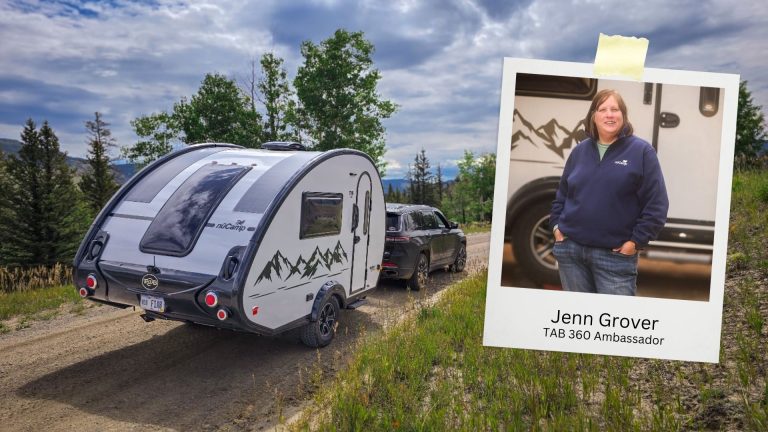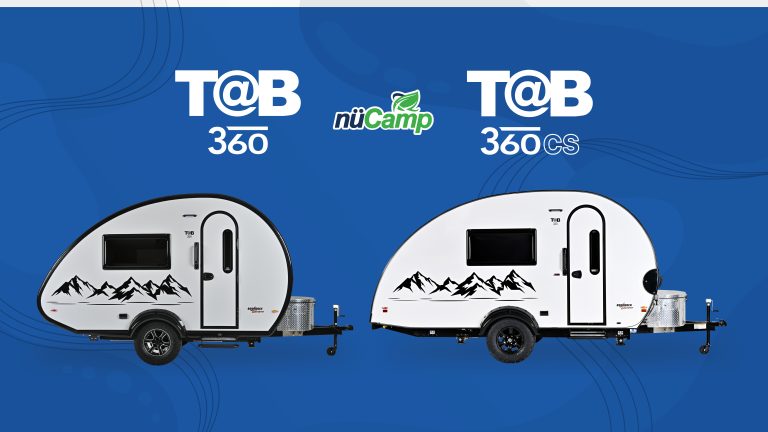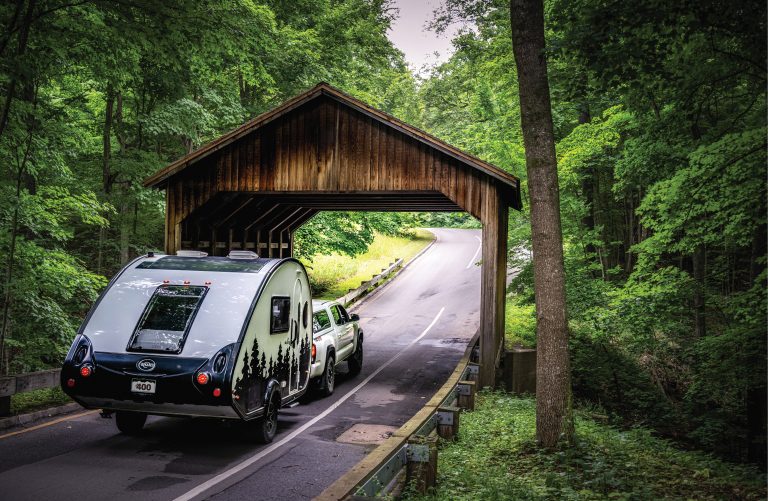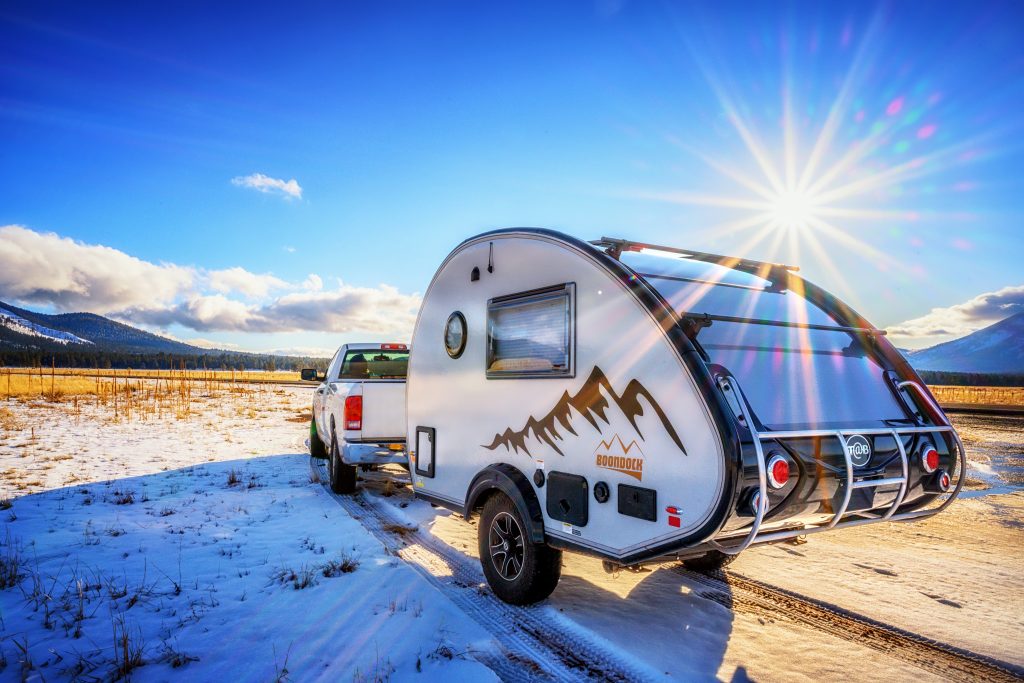Imagine waking up to a fresh blanket of snow covering the trees and mountains around you. The powder-fresh snow has yet to be touched by footprints, and a feeling of peacefulness washes over you as you cradle a cup of steaming coffee.
Camping in the winter can be much different from camping in other seasons due to freezing temperatures and snow and ice. If you’re considering some cold-weather camping, keep Old Man Winter outside with these tips for keeping your rig warm and toasty!
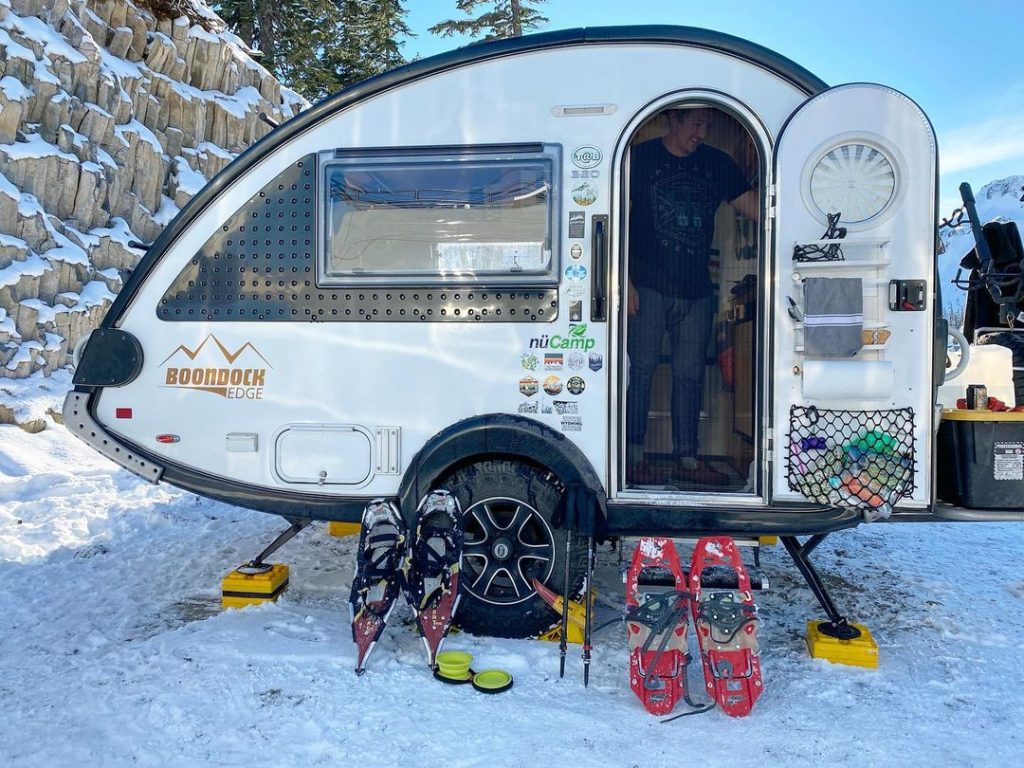
Before you leave
Being weather aware is important no matter what the season. The first step to planning any winter camping trip is to keep an eye on weather conditions and be prepared for snow or ice storms along your route. It’s also good practice to have an emergency kit that includes items such as bottled water, a flashlight with extra batteries, a first-aid kit, a power bank and phone charger, and extra items to keep you warm like blankets, mittens, and hats.
An ounce of prevention is worth a pound of cure. With that thinking in mind, ensure your camper is in top shape before heading out on a new adventure. That means do all servicing prior to camping in the cold: check your camper’s furnace, vent pipes (to get rid of any creepie-crawler critters), and filter if your system has one, recommends Always on Liberty. It’s also important to fill up your propane tanks and check the batteries for your rig and tow vehicle to make sure they are in good operating order.
Check all your doors, windows, and vents for gaps and replace them as needed with RV sealant, caulk, or the appropriate weatherstripping. Also, inspect those areas where wires come in through the walls or floors. If you see any spaces, seal them to keep the warm air in. Camper Smarts recommended using expandable spray foam (available online or in most home improvement stores) to plug those holes. If you’re worried about rodents seeking shelter from the cold, especially through the sewer hose entry, RV Geeks suggested using steel or brass wool to seal small openings.
Skirting can help keep cold air from sneaking under your camper and from there, into your camper. Options include inflatable skirting, vinyl material that snaps around the RV, plywood, thick plastic sheeting, or styrofoam boards, said Do It Yourself RV.
nuCamp’s teardrop trailers are designed for three-season camping, meaning you must winterize if you are planning to camp in temperatures below freezing. Since 2021, all Cirrus Truck Campers are four-season campers. However, your truck camper needs to be continuously plugged into shore power to prevent the plumbing from freezing.
If you need to winterize your camper, check out our winterizing video series here. When winterizing, you drain all of the plumbing lines in your unit, blow out the lines with compressed air, and then put antifreeze into the plumbing system to protect it while you’re out camping in cold temps or while it is in storage. This includes pouring RV antifreeze into the toilet and shower drain to prevent the black and gray tanks from freezing.
Now that you’ve done all the insulating to keep the cold out, keep a watchful eye on the humidity within your camper. Too much can lead to health issues for you and your rig. A humidity sensor will monitor the amount of moisture in the air and if it’s too much, use a dehumidifier to reduce it to about 30 to 50%.
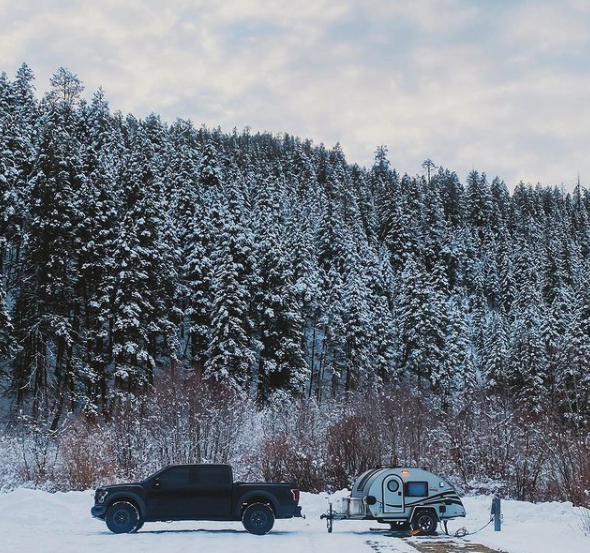
While you’re on the road
Just because you aren’t in your bricks-and-sticks abode, doesn’t mean you can’t apply some of the energy-saving tips you used there. Start with your thermostat. Keep it on the low side and wear more layers and socks and shoes (or heavy slippers) to keep your body warm without using up more energy than you need. To further save energy, keep the indoor temperature as low as is comfortable at night, and wear heavy jammies and socks, said Camper Smarts. You’ll be warm as toast!
Remember how you closed your shades and curtains when the summer sun was too hot to handle? Follow the same practice when the cold wind is blowing. Covering your windows can keep the drafts out and the heat in, noted Always on Liberty. For an extra added layer of protection, try insulated drapes or a thermal barrier of insulation over the window. Then, when the sun is shining, take advantage of the warmth and keep those drapes open wide!
The goal is to be able to enjoy the winter weather while keeping yourself and your rig in good operating shape!
Recent Articles

